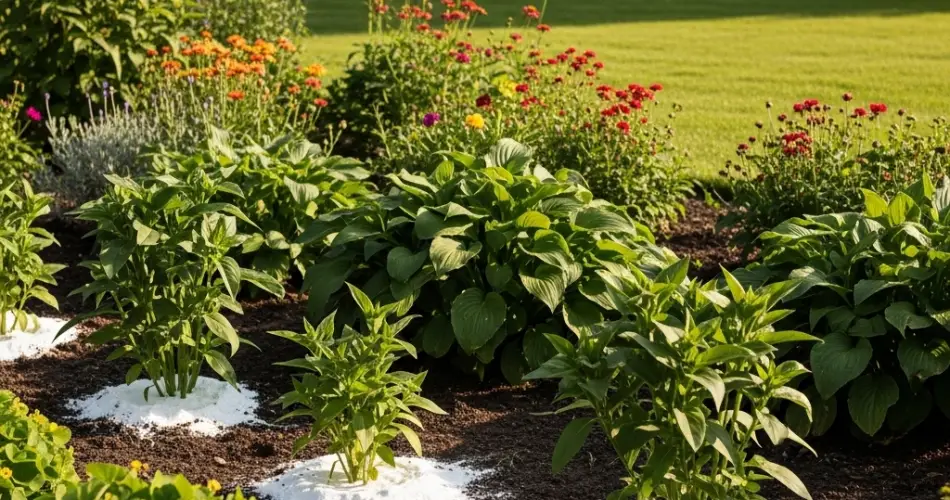Baking soda—commonly known for its role in baking and cleaning—has a lesser-known but highly effective use in the garden. This affordable, multi-purpose powder can serve as a natural fungicide, deodorizer, and even pest deterrent. For gardeners looking to reduce their reliance on synthetic chemicals, baking soda offers a simple, eco-friendly alternative for healthier plants and soil.
Let’s explore how this humble kitchen staple can become a valuable addition to your gardening toolkit.
Why Baking Soda Works in the Garden
Baking soda (sodium bicarbonate) has alkaline properties that can neutralize acidic environments and disrupt the growth of fungi and bacteria. It’s gentle enough not to harm most plants when used correctly, yet powerful enough to offer effective protection and enhancement.
Benefits include:
-
Combating fungal diseases like powdery mildew and black spot
-
Repelling some soft-bodied pests
-
Deodorizing compost bins
-
Sweetening tomato soil in small doses
-
Cleaning garden tools and containers
While not a replacement for a balanced soil care routine, baking soda can play a supportive role in natural garden maintenance.
1. Fungal Disease Control
One of baking soda’s most popular uses in gardening is as a treatment for fungal infections. Powdery mildew, black spot, and rust are common problems on roses, cucumbers, zucchinis, and other plants, especially in humid climates.
DIY Baking Soda Fungicide Spray:
-
1 tablespoon baking soda
-
1 teaspoon mild liquid soap (not detergent)
-
1 liter of water
Mix the ingredients and spray on affected leaves, especially the undersides, where fungi often thrive. Apply weekly, and after heavy rain. Always test on a small portion of the plant first to ensure there is no sensitivity.
Note: Baking soda works best as a preventive measure rather than a cure for severe infections.
2. Pest Deterrent
Although baking soda is not a broad-spectrum pesticide, it can help deter certain pests when combined with other ingredients.
Simple Pest Spray:
-
1 tablespoon baking soda
-
1 teaspoon neem oil or garlic extract (optional)
-
1 teaspoon liquid soap
-
1 liter of water
This mixture can discourage aphids, whiteflies, spider mites, and caterpillars. Spray on affected plants every 7–10 days, focusing on the leaf undersides.
3. Soil Sweetener for Tomatoes
Tomatoes prefer slightly acidic to neutral soil. In small amounts, baking soda can help reduce excessive acidity in tomato-growing areas, potentially improving fruit flavor.
How to apply:
Sprinkle 1 teaspoon of baking soda around the base of each tomato plant every 3–4 weeks. Water lightly afterward to help it absorb into the soil.
Caution: Do not use baking soda around acid-loving plants like blueberries or azaleas, as it may disrupt their growth.
4. Compost Deodorizer
Compost piles can develop strong odors, especially when high in nitrogen-rich kitchen scraps. Baking soda neutralizes some of these odors and helps balance the pH in compost bins.
Use: Lightly sprinkle baking soda over the compost surface. Don’t overdo it—excessive use can interfere with microbial activity essential for decomposition.
5. Clean Garden Tools Naturally
Dirty tools can harbor pathogens that spread between plants. Baking soda is a safe, non-toxic cleaner for garden tools and containers.
Tool Cleaning Paste:
-
Mix baking soda with a bit of water to form a paste
-
Scrub tools with a brush or sponge
-
Rinse thoroughly and dry before storage
For containers, especially those with mineral buildup, soak them in a solution of 1/4 cup baking soda per 2 liters of water before scrubbing.
6. Weed Control in Cracks
Baking soda can suppress weeds growing in sidewalk cracks or between pavers. Sprinkle generously into the cracks and sweep it in.
Important: Avoid applying baking soda directly to soil near flowers or vegetables, as it may affect soil pH and harm desirable plants.
7. Boosting Houseplant Health
For indoor plants prone to fungal growth or soil odor, baking soda can help. Mix 1/4 teaspoon of baking soda into a liter of water and use it to water plants once a month. This can prevent mildew and keep potting soil smelling fresh.
Again, moderation is key—always test a small amount first, especially with sensitive indoor species.
Final Tips for Safe Use
-
Always test sprays on one leaf before full application
-
Use sparingly—baking soda can accumulate salts in soil if overused
-
Avoid using with acid-loving plants
-
Apply in cooler parts of the day to prevent sunburn on wet leaves
-
Store your baking soda solution in a cool, dry place and use within a week
Conclusion
Baking soda is more than a baking ingredient—it’s a versatile, natural tool for gardeners who want simple, safe solutions for common plant problems. Whether you’re battling fungal infections, managing pests, or freshening up your compost, this budget-friendly remedy can make a big difference in your garden’s health and vitality.
With a little knowledge and care, baking soda can support a greener, more resilient garden—right alongside your watering can and trowel.



